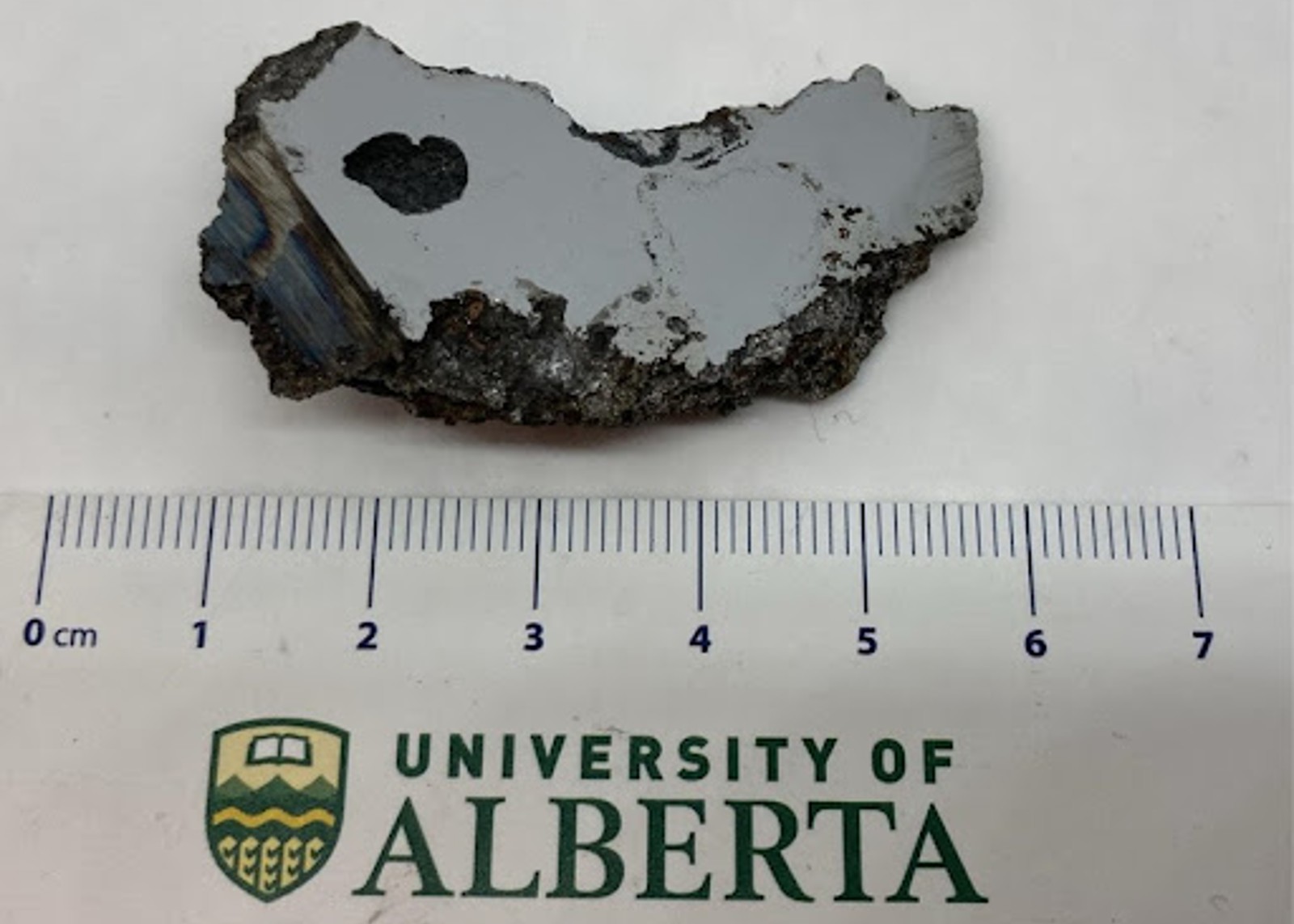Picture courtesy of University of Alberta Meteorite Collection
EDMONTON – A team of researchers, including a meteorite expert from the University of Alberta, has discovered at least two new minerals never before seen on Earth in a 15 tonne meteorite found in Somalia – the ninth largest meteorite ever found.
The two minerals, with a potential third mineral under consideration, came from a single 70 gram piece that was sent to the U of A for classification.
“Whenever you find a new mineral, it means that the geological conditions, the chemistry of the rock, was different than what’s been found before,” says Chris Herd, a professor in the Department of Earth & Atmospheric Sciences and curator of the University of Alberta’s Meteorite Collection. “That’s what makes this exciting: In this particular meteorite you have two officially described minerals that are new to science.”
The new minerals – named elaliite and elkinstantonite – were identified rapidly by Andrew Locock, head of the U of A’s Electron Microprobe Laboratory because each had been synthetically created before. Elaliite is named after the meteorite itself, dubbed the “El Ali” meteorite because it was found near El Ali, in Somalia. Herd named the second mineral after distinguished planetary scientist Lindy Elkins-Tanton, due to her work exploring how the cores of planets are formed.
The research is in collaboration with UCLA and the California Institute of Technology. Herd suggests if researchers are able to obtain more samples, even more minerals may be found. However, the future of the meteorite remains uncertain. Researchers say it appears to have been moved to China, so it remains to be seen whether additional samples will be available for scientific purposes.
Researchers continue to examine the minerals to determine what they can share about the conditions in the meteorite when it formed. Herd also notes that any new mineral discoveries could possibly yield exciting new uses down the line.
“Whenever there’s a new material that’s known, material scientists are interested too because of the potential uses in a wide range of things in society.”
More information is available here. To speak with Chris Herd, please contact:
Sarah Vernon | University of Alberta communications associate | svernon@ualberta.ca
